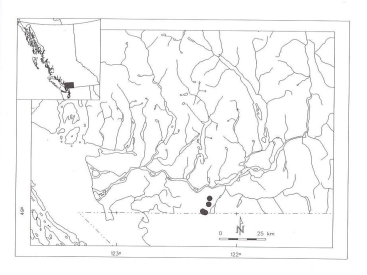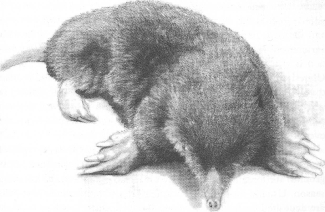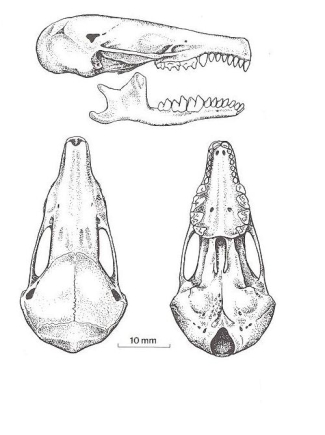View Desktop Page
Scapanus townsendii (Bachman)
Townsend's Mole
Family: Talpidae
Townsend's Mole
Family: Talpidae
Species account author: David Nagorsen
Extracted from the Opossums, Shrews and Moles of British Columbia
Extracted from the Opossums, Shrews and Moles of British Columbia
Map click to expand contents

Distribution of Scapanus townsendii in British Columbia.
(Click on the map to view a larger version.)
Source: Opossums, Shrews and Moles of British Columbia by David Nagorsen © Royal BC Museum
Illustration click to expand contents
Click on the image(s) below to view an expanded illustration for this taxon.


Illustration Source: : Opossums, Shrews and Moles of British Columbia by David Nagorsen © Royal BC Museum
Species Information click to expand contents
Townsend's Mole is the largest mole in North America. It is essentially a large version of the Coast Mole (Scapanus orarius). Its fur is short, soft and velvety, ranging in colour from blackish-brown to grey, and paler in summer. In some populations a few individuals have aberrant pelages with irregular white or yellow markings on the undersides. However, these markings are not evident on the few specimens from British Columbia. The front feet are broad and shovel-like with long flat claws; the hind feet are not enlarged and have short weak claws. The snout is long and almost naked. The eyes are minute; external ears are absent. The tail is short and nearly naked. Males are usually larger than females. The skull resembles that of the Coast Mole, with 44 teeth.
IdentificationThe only mammal that Townsend's Mole could be confused with is the Coast Mole; see that species account for diagnostic traits.
Dental Formulaincisors: 3/3
canines: 1/1
premolars: 4/4
molars: 3/3
Measurementstotal length: 205 (179-237) n = 30
tail vertebrae: 38 (31-45) n = 30
hind foot: 25 (23-29) n = 31
weight: 137.9 (121.0-164.0) n = 7 (males)
113.5 (96.0-122.0) n = 5 (females)
Biology click to expand contents
|
Habitat click to expand contents
|
Distribution click to expand contents
|
Taxonomy click to expand contents
|
Remarks click to expand contents
|
Status Information click to expand contents
BC Ministry of Environment: BC Species and Ecosystems Explorer--the authoritative source for conservation information in British Columbia. |
